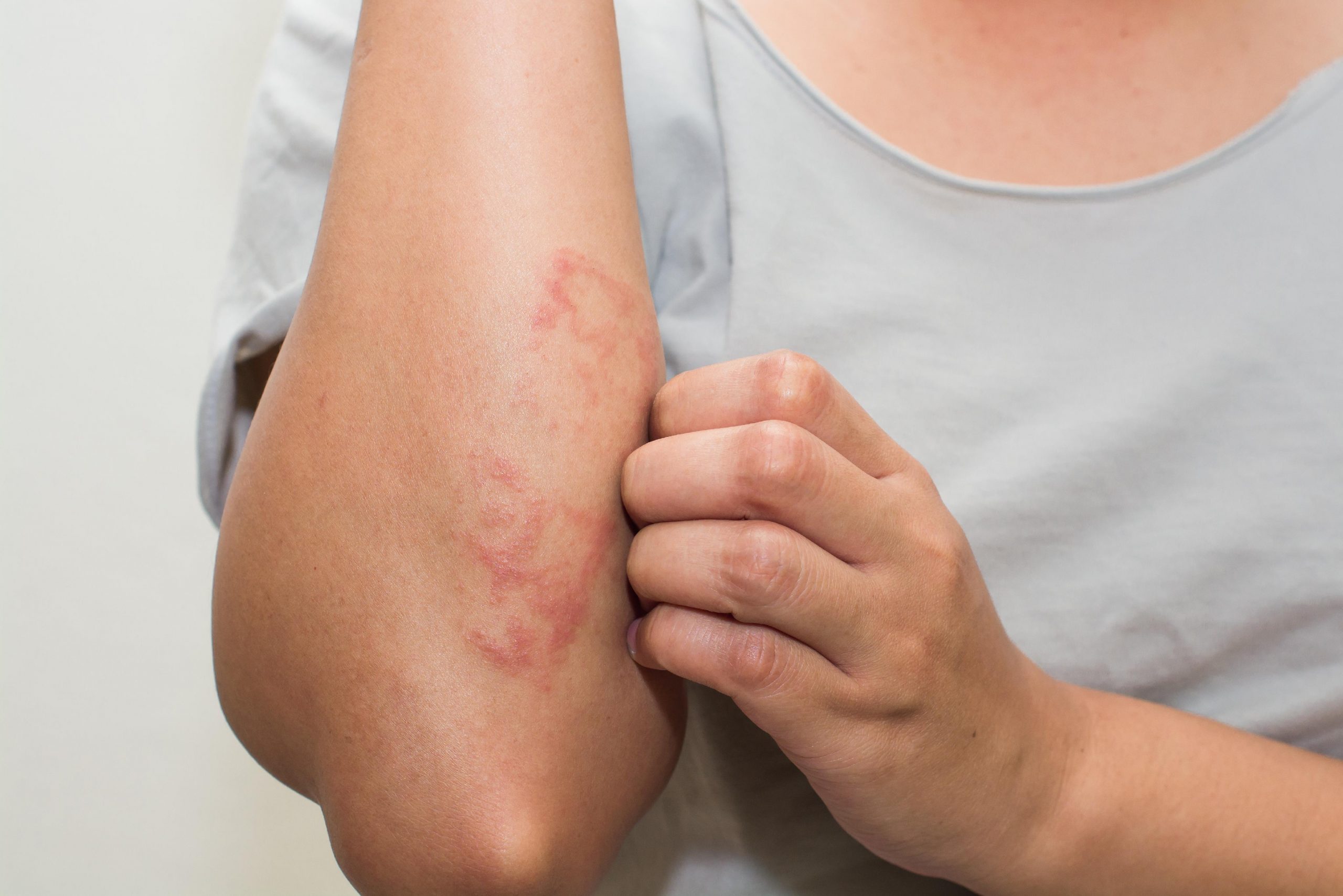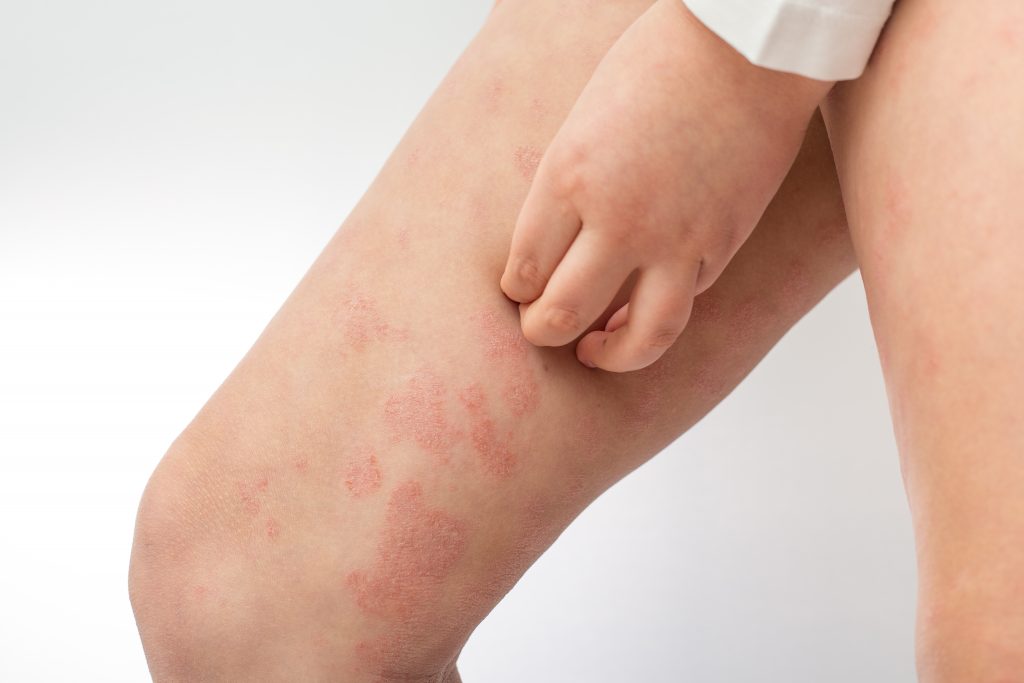
What is eczema (dermatitis)?
The word eczema, derived from the Greek ‘to break out or boil over’, refers to the
vesicles (bubbles) seen in acute eczema. Dermatitis means inflammation of the skin. the
terms tend to be used synonymously. eczema is a cutaneous reaction pattern that is poorly
understood, and this is reflected by the confusing terminology used to describe different
patterns. Oedema within and between keratinocytes (spongiosis) may produce weeping,
with thin-walled vesicles (intra-epidermal) that soon rupture. Eczema may be endogenous
(commonest form—atopic eczema) or exogenous, but barrier function of the epidermis is
abnormal in most forms of eczema, so the skin is easily irritated.

What should I look for?
Eczema is itchy. Patients with acutely inflamed eczema may also be very uncomfortable.
endogenous disease tends to be symmetrical, whereas the site of contact determines the
distribution of a contact dermatitis. Signs depend on whether acute, subacute, or chronic
but include combinations of:
• Erythema: often ill-defined (compare with psoriasis which is well defined ).
• Scaling, i.e. epidermal pathology: may not be present in the early stages of acute contact
eczema in which the skin is erythematous and oedematous .
• Scratch marks (excoriations).
• Papules, oedema, and/or vesicles (occasionally bullae) in acute eczema.
• Exudation of serous fluid (weeping) and crusting in acute eczema (crusting may be a
sign of 2° bacterial infection, as may pustules).
• Thickening of the skin, with increased skin markings (lichenification) 2° to chronic
rubbing.
• Prurigo (itchy, erythematous nodules): 2° to chronic rubbing.
• Hyperkeratosis in chronic eczema.
• Hyperpigmentation 2° to chronic rubbing.
• Post-inflammatory hypo- or hyperpigmentation in dark skin.
What should I do?
• Generally, a skin biopsy is not required—the histology will not tell you the cause of the
eczema, and the diagnosis is clinical.
• Take skin swabs from crusted weeping eczema for bacterial culture.
• In vesicular rashes, exclude herpes virus infection. eczema herpeticum may complicate
atopic eczema.
• Skin scrapes to exclude fungal (dermatophyte) infection in asymmetrical scaly rashes.
• Patch test if you suspect allergic contact dermatitis.
• Topical and systemic treatments.
Common patterns of eczema:
Eczema is a cutaneous reaction pattern that is poorly understood. This is reflected by the
complex terminology used. The name may imply the cause (contact dermatitis), links
with other diseases (atopic), appearance of the skin (discoid eczema, pompholyx,
asteatotic eczema), or distribution (varicose and seborrhoeic eczema). Patients may have
>1 type of eczema, e.g. abnormal skin barrier function in atopic eczema predisposes to
irritant contact dermatitis such as hand eczema; environmental irritants, such as soap,
exacerbate asteatotic eczema; and allergic contact dermatitis may be superimposed on
varicose eczema.